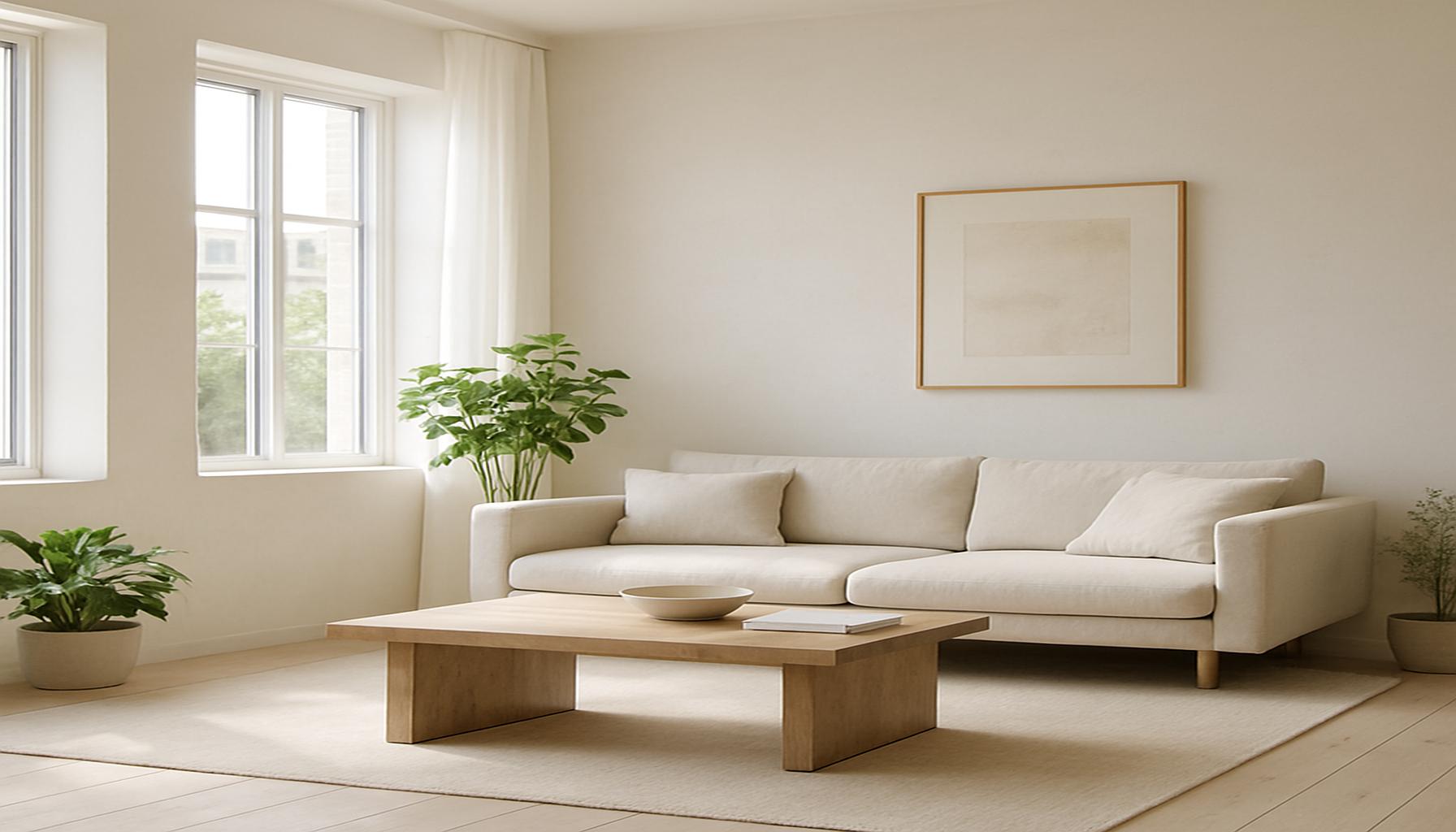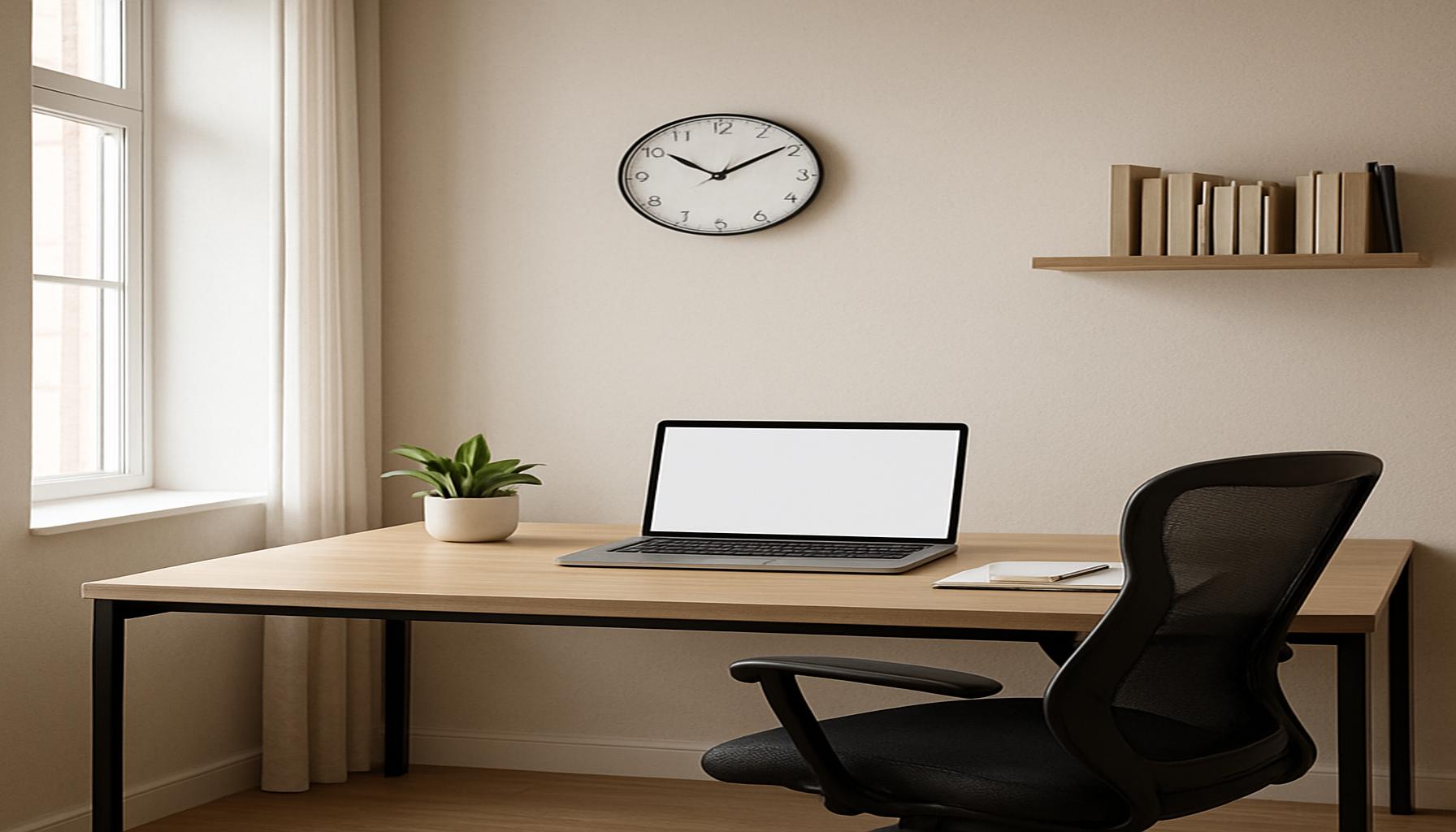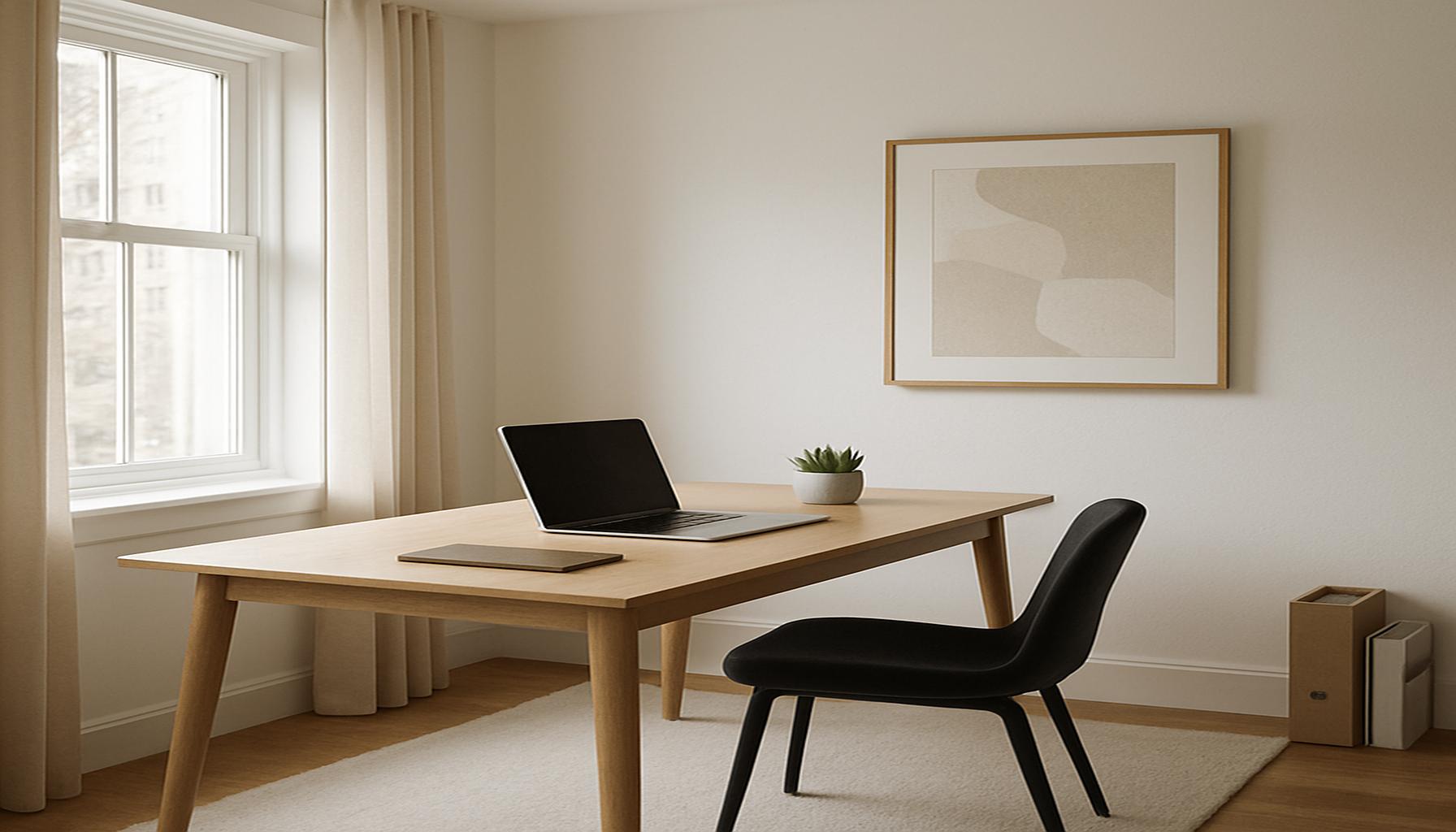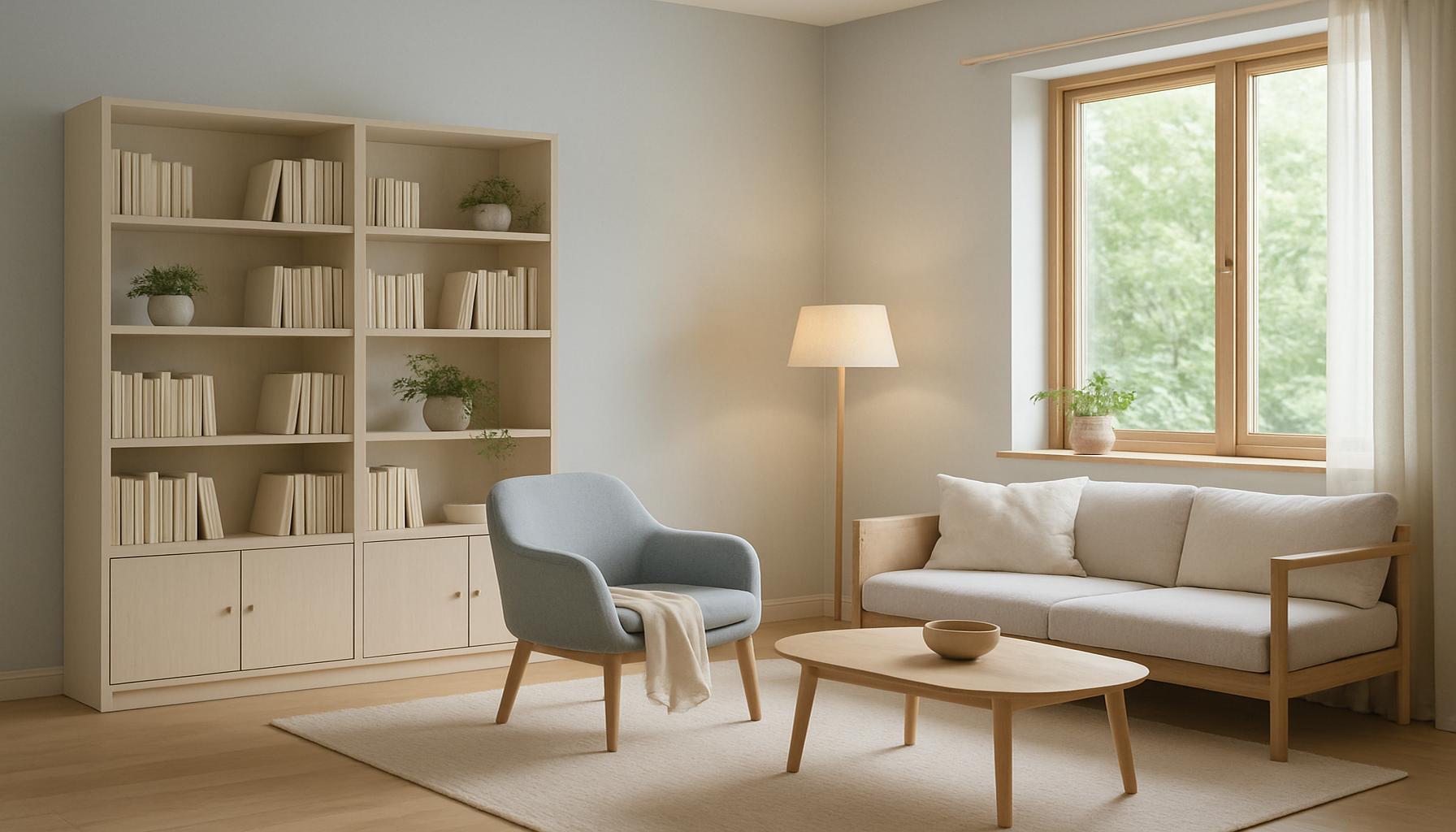Minimalist Interior Design: Creating Open and Cozy Environments

The Allure of Minimalist Design
In today’s fast-paced world, the allure of minimalist interior design is becoming increasingly irresistible. By focusing on simplicity and functionality, this design philosophy fosters a peaceful atmosphere that can transform any space into a relaxing haven. The essence of minimalism is not just about decluttering; it’s about creating a cozy environment that feels open and inviting. Embracing fewer possessions doesn’t necessarily mean sacrificing comfort or style; rather, it celebrates the beauty found in simplicity.
Understanding Key Elements
At the heart of minimalist design are several key elements that work together to create an effortless and harmonious aesthetic. These include:
- Neutral color palettes: Soft whites, grays, and earth tones set a calm backdrop, allowing individuals to feel immediately at ease when entering a room. This understated color scheme promotes relaxation and creates a cohesive look.
- Functional furniture: Pieces that serve a purpose without excess ornamentation are essential. Consider multifunctional items, such as a coffee table that doubles as storage or a sofa that converts into a bed, maximizing utility without overwhelming the space.
- Natural light: Designing spaces that maximize sunlight enhances the feeling of openness and connects the indoors with the outdoors. Incorporating large windows, skylights, or glass doors can pull in natural light and invigorate a space.
The Versatility of Minimalism
What makes minimalist design particularly appealing is its versatility. It can be adapted to various aesthetics, from modern and industrial to rustic and Scandinavian. The goal is to marry functionality with a sense of comfort, ensuring each element in a room contributes to the overall ambiance. This adaptability allows anyone to incorporate minimalist principles, regardless of personal style. For instance, a minimalist industrial loft may feature exposed brick, metallic furniture, and sparse decor, while a Scandinavian-inspired home might emphasize light wood tones, soft textiles, and greenery.
The Feeling of Tranquility
Imagine stepping into a space that radiates tranquility. Here, fewer items create a serene sanctuary instead of chaotic clutter. This approach can lead to improved mental clarity and reduced stress, as a streamlined environment often fosters a clearer mind. Areas dedicated to mindfulness, such as reading nooks or meditation corners, thrive under minimalist principles, promoting relaxation and reflection.
Discovering Your Minimalist Space
As we delve deeper, you’ll learn practical tips, stunning examples, and strategic approaches to crafting a home that embodies both openness and coziness in every corner. Start slowly by identifying items that you genuinely cherish and letting go of those that no longer serve a purpose. When reminiscing about cherished memories, you might find that certain items are more significant than others, allowing the space to breathe and inviting a greater sense of peace into your life.
Ultimately, embracing minimalist interior design is not merely a trend but a lifestyle choice that encourages mindfulness and intentionality in how we curate our living environments. Such thoughtful arrangements inspire creativity and lead to a more harmonious living experience, prompting many to rethink how to utilize space effectively.
DIVE DEEPER: Click here to enhance your daily routine
Embracing the Principles of Minimalism
To fully appreciate the beauty of minimalist interior design, it’s essential to embrace its core principles. These principles are deeply rooted in the philosophy of less is more, focusing on quality over quantity and intentionality in every design choice. When you apply these guiding concepts to your living environment, the result is a space that feels both inviting and serene, offering a retreat from the ordinary hustle and bustle of everyday life.
Decluttering: The First Step
One of the most significant steps in adopting a minimalist approach is decluttering. This process involves not just removing physical items, but also examining the emotional connections they hold. Sorting through belongings can be both liberating and rejuvenating, as it encourages individuals to create a space that reflects who they truly are. To effectively declutter, consider the following:
- Assess Each Item: Carefully evaluate whether each piece serves a function or brings joy. If not, it may be time to part ways.
- Create Categories: Organize items into categories such as keep, donate, and discard to streamline the decision-making process.
- Set Limits: Establish boundaries for collections or sentimental items to maintain a balanced approach in your living space.
Choosing the Right Materials
In **minimalist interior design**, the choice of materials plays a pivotal role in shaping the character of a room. Opting for natural materials such as wood, stone, and metal not only enhances the aesthetic appeal but also fosters a connection to nature, which is a cornerstone of this design philosophy. Each material carries its unique texture and warmth, which can add depth to an otherwise sparse environment. For example, reclaimed wood furniture may offer rustic charm, while sleek metals can invoke a modern feel.
Open Spaces: The Heart of Minimalism
The concept of an open space is fundamental in achieving a minimalist design. Creating an airy environment allows for better light flow and a sense of freedom. Walls can be minimized or removed entirely to create an open-plan layout, which promotes social interactions while ensuring comfort. Additionally, using furniture that complements the layout—like furniture with slender profiles or clear acrylic tables—can help maintain a sense of openness and facilitate movement throughout the space.
Inviting Cozy Elements
Despite the starkness often associated with minimalism, incorporating cozy elements is key to achieving a warm atmosphere. Layered textiles such as soft throws, plush cushions, and inviting rugs can easily add comfort without overwhelming the simplicity of the design. Moreover, decorative items need not be excessive; instead, choose meaningful artworks or plants that can add color and life to the surroundings while remaining true to minimalist principles.
As we explore the nuances of minimalist interior design further, the goal will be to unveil effective strategies for embracing simplicity while ensuring comfort and style remain at the forefront. By thoughtfully curating a space that merges these principles, individuals can create an environment that embodies both openness and inviting warmth—a true haven from the rapid pace of modern living.
| Advantages | Description |
|---|---|
| Enhanced Space Perception | Minimalist interiors utilize light colors and uncluttered layouts to create an illusion of larger spaces, making homes feel more open. |
| Comfort and Warmth | By incorporating soft textures and fewer items, minimalist design fosters a cozy atmosphere that invites relaxation and intimacy. |
The principles of Minimalist Interior Design focus on the harmony of space and aesthetic pleasure. This design philosophy promotes the idea that less is more, enabling individuals to appreciate the beauty of simplicity. Using a palette of neutral tones supplemented with natural materials enhances both the ambiance and the emotional warmth of a home.Furthermore, the arrangement of furniture in a minimalist setting can significantly improve the flow of movement, making it easier to navigate and enjoy daily activities. Thoughtfully chosen decorative elements, such as plants or art pieces, serve dual purposes—adding personality while maintaining the focus on spaciousness. In essence, embracing minimalism does not mean sacrificing comfort; rather, it emphasizes a balanced lifestyle where every item serves a purpose. This design style not only enriches personal living spaces but also encourages mindful consumption. It inspires individuals to consciously choose what they bring into their homes, leading to a more serene and aesthetically pleasing environment.
DISCOVER MORE: Click here to optimize your digital space
Cultivating Functional Aesthetics
At the heart of minimalist interior design is the idea of functional aesthetics—creating spaces that are not only visually appealing but also practical and purposeful. Every element within a minimalist room should serve a distinct function, allowing the space to breathe while still catering to the needs of its inhabitants. Achieving this balance requires careful consideration of the furniture layout and the selection of multi-functional pieces.
The Power of Multi-Functional Furniture
In smaller spaces especially, multi-functional furniture can be a game-changer. Items like a sofa bed provide seating by day and convert to a bed by night, making them ideal for urban dwellings where space is at a premium. Similarly, coffee tables with hidden storage compartments can help alleviate clutter while serving as central gathering places. In a minimalist design, these pieces not only fulfill their intended functions but also contribute to the harmony of the space, reinforcing the principle of simplicity.
Lighting: A Key Element in Minimalism
Lighting is a crucial aspect of minimalist interior design that can significantly influence the atmosphere of a room. Utilizing a combination of natural and artificial light can create a warm, inviting environment while enhancing the openness that minimalism champions. Large windows and skylights allow natural light to flood the space, promoting a connection with the outdoors and reducing reliance on artificial fixtures.
When it comes to artificial lighting, consider streamlined fixtures, such as pendant lights with clean lines or recessed lighting that can elegantly blend into the ceiling. Such lighting options accentuate the minimalist aesthetic without overwhelming the space with complicated visual distractions.
Color Palettes: Keeping it Simple and Soft
The color palette in minimalist interiors is typically soft and subdued, favoring neutral shades that create a calm and cohesive environment. Whites, creams, grays, and earth tones aid in maximizing the perception of space and light while serving as a blank canvas for other elements in the room. However, minimalist design does not shy away from incorporating accents; a muted mustard yellow or a deep navy accent wall can introduce character without sacrificing simplicity.
Moreover, utilizing variations of texture through textiles or surface finishes can add dimension without cluttering the visual field. Think Italian linen drapes, handcrafted ceramic vases, or even natural woven baskets that blend functionality and style while staying true to the minimalist ethos.
Integrating Nature: Biophilic Design
Bringing nature indoors through biophilic design is an increasingly popular trend in minimalism, further blurring the lines between interior and exterior spaces. Incorporating indoor plants, vertical gardens, or even natural stone accents not only enhances the aesthetic but also promotes improved air quality and overall well-being. Succulents and snake plants are ideal for minimalist spaces as they require low maintenance and can thrive in various lighting conditions. These elements add a burst of life, echoing the minimalist belief in infusing simplicity with substance.
By carefully considering how each component plays a role in both functionality and aesthetics, one can succeed in creating a minimalist interior that provides a welcoming atmosphere while reflecting individual taste and lifestyle. Seeking a balance of openness and coziness leads to a home that feels both expansive and nurturing—an oasis in a bustling world. As the journey into the realm of minimalist interior design continues, the exploration of textures, colors, and natural elements will only enrich the pursuit of creating a truly inviting space.
DIVE DEEPER: Click here for smart digital decluttering tips
Final Thoughts on Minimalist Interior Design
In conclusion, minimalist interior design is not merely a trend; it is a lifestyle choice that promotes harmony and clarity in our living spaces. By stripping away excess and focusing on essential elements, this design philosophy creates environments that are both open and cozy. The careful selection of multi-functional furniture, optimal use of lighting, and a well-thought-out color palette contribute to a serene atmosphere that invites relaxation and well-being.
As we embrace the principles of simplicity and functionality, it becomes clear that minimalist design transcends aesthetics—it’s about fostering a nurturing home environment. Integrating natural elements through biophilic design further enhances our connection with nature, providing not only beauty but also promoting a healthier living space. The choices we make in our interiors reflect our values, priorities, and lifestyle, and by choosing minimalism, we advocate for mindfulness and clarity.
Ultimately, the goal of minimalist design is to simplify our lives while enriching our daily experiences. As we navigate this journey, we encourage readers to explore and adapt these concepts, seeking to discover how minimalism can transform their environments into havens of peace and comfort. The quest for a cozy minimalist interior is an ongoing one, inviting endless possibilities that resonate with individual tastes and lifestyles; it’s a journey worthy of every step.


